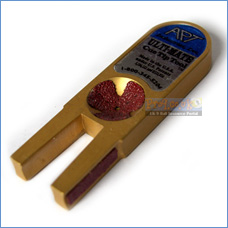ShootingArts said:If the abrasive chalk particles were adhered firmly to the chalk cube you would probably be correct. However the whole reason chalk works for it's purpose is that it is more loosely bound to itself than it binds to the leather of the tip. What actually has the primary wearing or cutting action are the chalk particles that are embedded in the tip and stationary.
I just treated a 1.5 inch long piece of leather by attaching it to a half inch thick piece of stone and then rubbing a piece of chalk over the surface which was very similar to a tip in texture. After conditioning the leather to match a typical tip with some use, I cleaned as much chalk out of it as possible and measured the thickness of the leather. Then I started rubbing a cube of chalk against it that had already been ground flat. I held the leather vertically so chalk dust could fall freely and I also cleaned the leather very frequently in an effort to expose it to the chalk cube as much as possible.
When I completed the test I had cut just over 100/1000", one-tenth of an inch, off of the chalk cube.(Master blue, flag) The leather measured exactly the same as before testing after cleaning. Not even .001 lost. The leather tip holding the grit works much the same way as a leather strop holding grit is used to sharpen fine steel. This isn't to say that no leather is lost, however the abrasive action of chalk is not the cause of significant leather loss.
Rubbing the chalk across the top of the tip doesn't explain tip flattening, most experienced shooters focus chalking towards the edge of the tip where it is needed anyway which would round the tip more if the abrasive action of chalk was the reason for leather removal.
Hu
It's more likely that chalk wears the tip when the tip hits the ball.
pj
chgo


